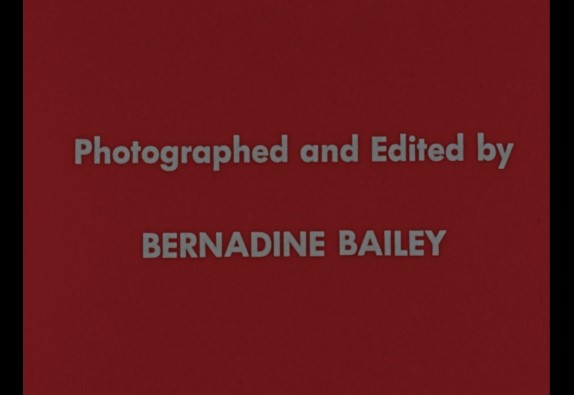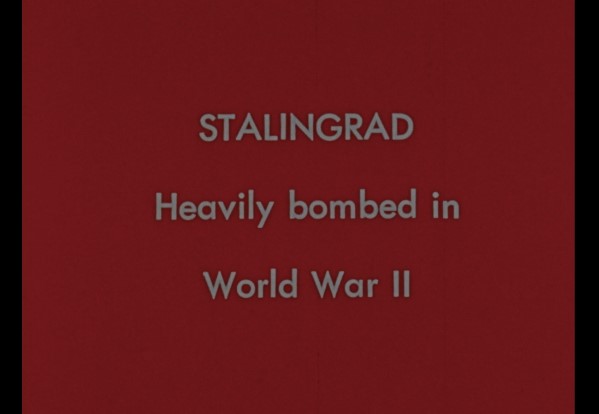By Jesse Balzer
Bernadine Bailey (1901-1995) was an American travel writer from Mattoon, Illinois. Her travelogues – and other writings on health, medicine, and politics – were syndicated in widely-read publications such as Reader’s Digest, Today’s Health, Travel, as well as newspapers such as the Chicago Tribune and The New York Times, among others. She is also the author of over 100 books on a variety of subjects, most centered on travel and tourism around the world.
Film was an integral part of Bailey’s work. In addition to various home movies of daily life, our collection includes Bernadine Bailey’s travel films, photographs, and slides from her journeys around the world. These films reveal the extent to which Bailey utilized the moving image in order to document her travels and supplement her travel writing, as well as for exhibitions and presentations of her travels. In these films, Bailey’s camera often focuses on the people of each place, documenting their cultural practices and customs, their daily lives, fashions, and hobbies. While certainly Eurocentric and ethnographic in their orientation, Bailey’s films nonetheless offer a comparatively rare glimpse into the work of a travel writer, and an attempt to understand people and nations which may have been largely unfamiliar, at least at the time, to her American readers.
In addition to many shorter reels of Bernadine Bailey’s travels to Hong Kong, Malaysia, England, Scotland, Switzerland, Turkey, and elsewhere, our collection also includes several, approximately hour-long reels with their own titles and descriptive intertitles, most likely composed for some form of public exhibition or screening. In “Behind the Iron Curtain”, a reel from 1957, Bailey documents city and rural life in Leningrad, Stalingrad and several other places in the then Soviet Union.


In this first clip, citizens of Leningrad (now St. Petersburg) visit the Russian Museum, standing in the park nearby. This includes the statue of Russian author Alexander Pushkin, erected in this same year for the 250th anniversary celebration of Leningrad. Unlike existing footage of the celebration, such as this newsreel, Bailey’s film focuses on the people relaxing in the park, not on officials, bureaucrats, and public-facing events.
Bailey’s approach to filming and humanizing the people of the places she visited was carried forward into her writing, her filmmaking practice aiding and informing her vocation as a writer. Her later book on the Soviet Union, The Captive Nations: Our First Line of Defense (1969), detailed a strategy which saw the people, those she filmed “behind the iron curtain,” as the key to anti-communist agitation and the promotion of democracy. This was further explained in an interview for the Chicago Tribune in August, 1969, which discussed Bailey’s book:
“Altho the subject is a dark and bloody one, Mrs. Bailey is not gloomy about the future. She sees the captive nations, because of their languages and histories and spirit of nationalism, as dividing the house of communism so that it will not stand in history… Mrs. Bailey contends that these people are a great asset to the non-communist world and the best alternative to nuclear war. She holds that they should prove to be our staunchest allies and our first line of defense in a war.”

In the October 27, 1957 edition of the Chicago Daily Tribune, Bailey wrote about this month-long visit to Moscow, Leningrad, Stalingrad, Kharkov, Kiev, and Rostov, as well as outlaying farms and small towns. Bailey’s report in the Tribune, much like her films, focuses on the people, and in particular women, who make up what she described in The Captive Nations as our best hope against escalation in the Cold War. Her filmmaking, then, shows a fascination with the unfamiliar domestic lifestyles of foreign nations. In this way, her writing, much like her camera, is hardly neutral. As Bailey wrote in the Tribune after returning home from her trip: “Altho I had read that Russian women work like men, it nevertheless was a jolt to see them uncoupling coaches of railway trains, running street cars and buses, acting as flagmen at railway crossings, working on the right-of-way laying tracks, and digging ditches.” And take, for example, the clip below, in which Bailey observes several Russian women working on a farm.
Here is a comparative description in the Chicago Daily Tribune article:
“What with hard work and a diet made up largely of bread, potatoes, tough meat, and borscht, it’s small wonder that the Russian women are no glamor girls. Mostly of peasant origin, they are short, stocky, and overweight. Their role is not to make life gayer or more attractive but to help to achieve the stated communist goals. So why bother with girdles and lipstick, fancy hair-dos, and nail polish? They don’t. The occasional home permanent merely points up the effect of shabbiness and dowdiness. Their drab gray or black suits and their shapeless print cotton or rayon dresses are completely lacking in style.”
While certainly indicative of the anti-communist and patriarchal biases of the time, Bernadine Bailey’s work, both in print and in film, ultimately helped to humanize the people of often-oppositional nations and ideologies. Bailey’s films also reveal an interesting interplay between the written word and film, particularly in the travel genre. Finally, our collection of Bailey’s films brings additional awareness to non-theatrical women filmmakers and the ways in which they used the medium for their personal and professional lives.
See more of our Bernadine Bailey Collection, including travel films from New Zealand, Germany, Cambodia, Hong Kong, and more on IU’s Media Collections Online.
Leave a Reply